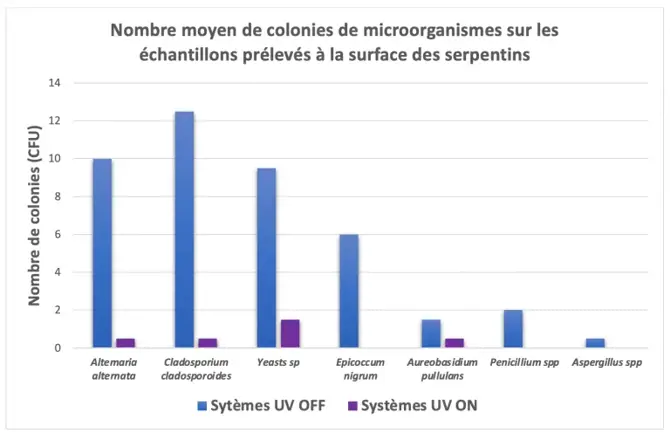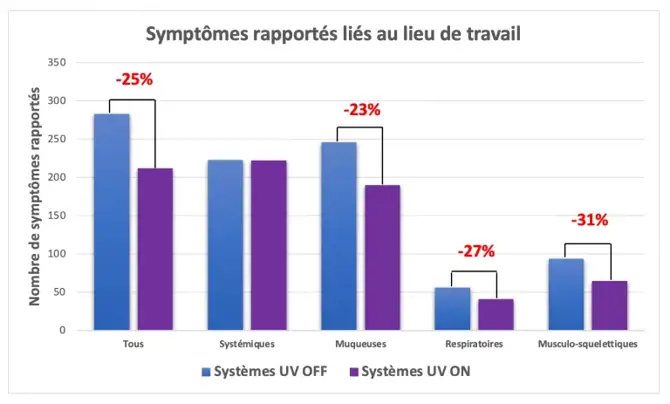Bacterial and endotoxin measures in the ventilation system.
Sterile coupons were installed on different surfaces of the ventilation system: on the cooling coils and drip pan (exposed to UVGI when turned ON), and on the filters (not exposed to UVGI). For bacterial count, coupons were collected and placed facing down on petri dishes, who were then incubated. For endotoxin count, coupons were then scraped with a sterile spatula, collected to sampling tubes, eluted, and assessed with an endotoxin measuring assay under standard lab procedures (LAL assay, KLARE protocol). Data is presented as the average number of bacterial colony forming units (CFU) per coupon that was formed on incubated petri dishes, and as the average of endotoxin units (EU) measured (n=4).

Following the protocol procedures described in Figure 1., a sample from each petri dish was further incubated for one week. Microorganism colony types were then isolated, differentiated and counted with a stereomicroscope. Representative colonies were further selected and processed to identify species, either directly or by subsequent cultivation on selective media. The different species were then identified using standard manuals and protocols. Data is presented as the average number of colony forming units (CFU) per coupon.

UVGI systems were installed in the ventilation systems of 3 different office buildings, irradiating the cooling coils directly and the drip pans. None of the selected buildings had prior outbreaks of building-related illnesses. All workers of these office buildings were eligible to participate in the study. During the last week before UVGI systems were turned on, participants were asked to complete a previously validated self-administered questionnaire about demographics, working, medical, and personal information. UV systems were then either turned on (for 4 consecutive weeks) or off (for 12 consecutive weeks), while other HVAC parameters (humidity, heating, cooling, recirculation) were operated as usual. Every participant completed up to 6 questionnaires (following UVGI on/off periods). The participants and personnel handing the questionnaire were informed of the study goal but were not aware of the status of the UV lamps (on/off). Results are presented as the number of participants’ reported symptoms from the administered questionnaires. Responses from each trial was deemed an independent observation.
